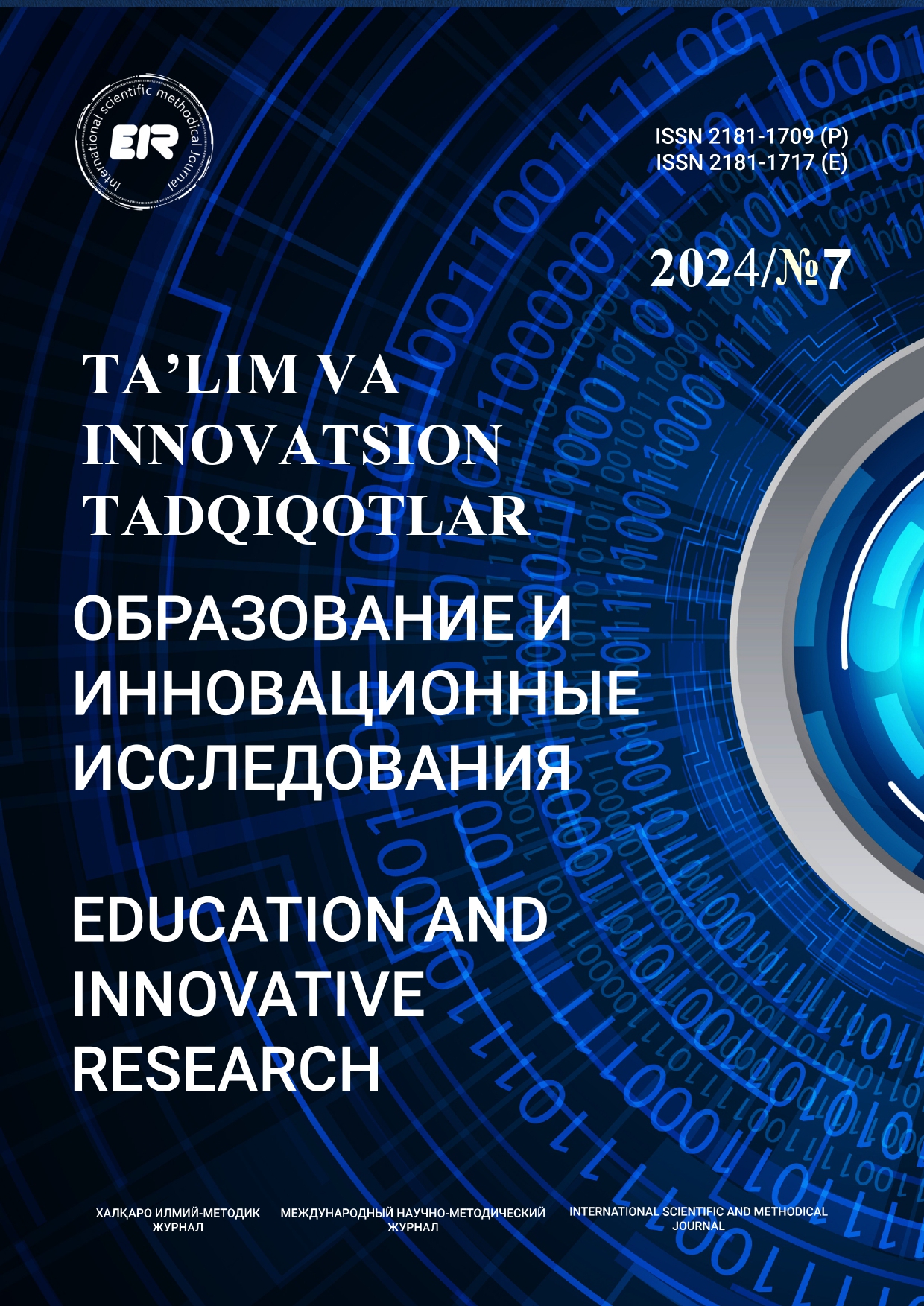SUN’IY INTELLEKT MAZMUNI VA TURLARI
Zaripov Kamol Yashinovich, Buxoro davlat universiteti I bosqich tayanch doktoranti
Ключевые слова:
образование, обучение, преподавание, методика, современные технологии, искусственный интеллект, изучение иностранных языков, интенсив, развитие.Аннотация
В данной статье представлена информация о программе, работающей с помощью современных технологий, особенно искусственного интеллекта, в методике преподавания иностранного языка. Приведены виды этих программ и возможности их использования в рамках разделов квалификационных аттестатов, оценивающих знание иностранного языка. Также приведены преимущества искусственного интеллекта для студентов и преподавателей языка, желающих выучить язык, и подход к программам, работающим с помощью искусственного интеллекта.
Библиографические ссылки
Schleirmacher.F. About different methods. Bulletin of Moscow.UN-that.2000.P.124-130.
Linghui Kong. Computational intellegence and neuroscience. Volume 2022. 2p.
A.Aleina. translation technologies: Scope,Tools and Resources. Target. Volume 20,№6. P. 79-182.
I.Bowker. Computer-SIded translation technology. A practiced introduction.
Ottawa. University of Ottawa Press. 2002
Ibragimov, X., Abdullayeva Sh. «Pedagogika nazariyasi (darslik).» T.: Fan va texnologiya 288 (2008).
Ибраимов Х. И. Креативность как одна из характеристик личности будущего педагога //Наука, образование и культура. – 2018. – №. 3 (27). – С. 44-46.
Ibragimovich X. I. O‘zbekiston oliy ta’lim tizimida kredit-modul texnologiyalarini qo ‘llashning o ‘ziga xos xususiyatlari //integration of science, education and practice. Scientific methodical journal. – 2021. – С. 209-214.
Ibragimovich, IbrSImov Kholboy. «Theoretical and methodological basis of quality control and evaluation of education in higher education system.» International journal of discourse on innovation, integration and education 1 (2020): 6-15.
Maxmutovna T. X. Influence of mass culture on the formation and development of the spiritual and moral image of the young generation //European Journal of Research and Reflection in Educational Sciences Vol. – 2019. – Т. 7. – №. 12.
Mahmutovna T. X. Ways to Form Immunity of Protection from «Public Culture» in Adolescent Students //Kresna Social Science and Humanities Research. – 2022. – Т. 3. – С. 115-117.
Makhmutovna T. K., Ibragimovna T. I. Specific features of the pedagogical process focused on increasing the social activity of youth //Asian Journal of Multidimensional Research (AJMR). – 2020. – Т. 9. – №. 6. – С. 165-171.
Abdullaeva, B. S., Sobirova, M. A., Abduganiev, O. T., & Abdullaev, D. N. (2020). The specifics of modern legal education and upbringing of schoolchildrenin the countries of the post-soviet world. Journal of Advanced Research in Dynamical and Control Systems, 12(2), 2706-2714.
Oglu, Abduganiev Ozod Tursunboy. «Pedagogical Conditions And Mechanisms Of Development Of Social Active Civil Competence In Students.» Turkish Journal of Computer and Mathematics Education 12, no. 7 (2021): 433-442.
Abduganiyev, O. T. (2022, December). Factors affecting the development of socially active citizenship competence in students. In E Conference Zone (p. 10-13).
Abduganiev O. Developing Student Civil Competency //Eastern European Scientific Journal. – 2019. – №. 1.
Махмудов А.Х., Джураев Р. Х., Ахунжонов А. Т. Дидактический потенциал шахматной игры //Наука и образование сегодня. – 2020. – №. 6-2 (53). – С. 70-71.
Махмудов А.Х. Интенсификация обучения предмета «шахматы» через решения шахматных задач: Научно-практическая конференция. – 2022. – С. 766- 768.
Джураев Р.Х., Махмудов А.Х., Фефелов В.С. Методология формирования учебно-творческого плана для компетентностной подготовки магистров // Педагогические науки. – 2012. – №. 1. – С. 84-90.
Махмудов А.Х., Абдурахмонов З.Б. Таълимда замонавий рақамли технологияларидан фойдаланишнинг ютуқлари ва муаммолари //Academic research in educational sciences. – 2021. – Т. 2. – №. CSPI conference 3.– С. 97-99
Otaboyeva М.R. Chet tilini o’qitishda zamonaviy innоvatsion texnologiyalaridan foydalanish va uning samaradorligi // Молодой ученый. — 2017. — № 4.2 (138.2). — С. 36-37.





